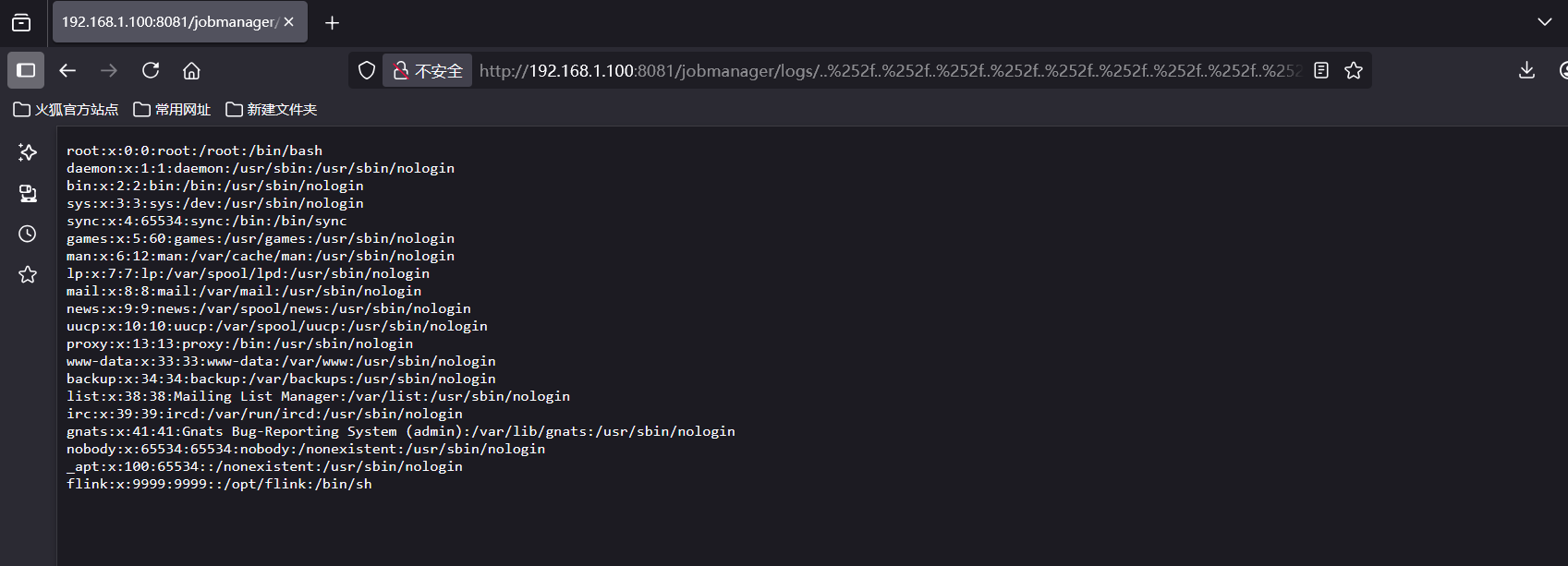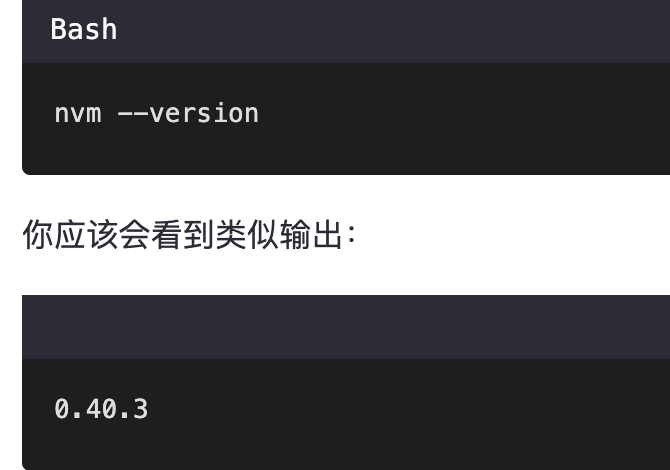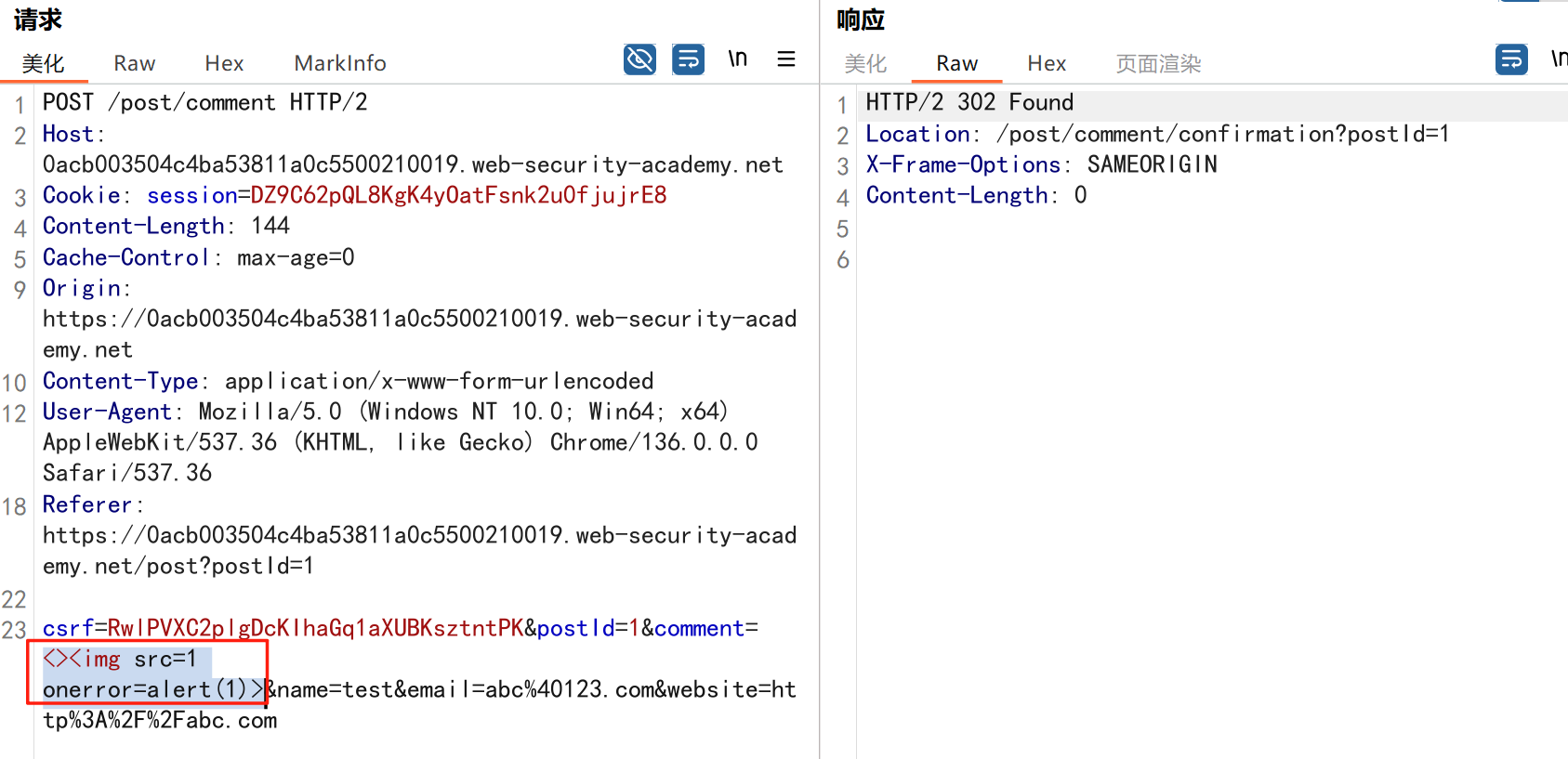OCP的operator——(4)用户任务:使用Operator创建etcd集群
文章目录
- 环境
- 在namespace中安装Operator
- 先决条件
- 使用Web console从OperatorHub安装
- 删除
- 使用CLI从OperatorHub安装
- 从已安装的Operator创建应用
- 使用Operator创建etcd集群
- 报错
- 从web console debug
- 从命令行debug
- 分析
- 参考
环境
- RHEL 9.3
- Red Hat OpenShift Local 2.32
在namespace中安装Operator
先决条件
打开web console:
$ crc console
Opening the OpenShift Web Console in the default browser...
会自动打开浏览,访问web console:

注:如果不想自动打开浏览器,则可以加上 --url 选项:
$ crc console --url
https://console-openshift-console.apps-crc.testing
然后手工复制URL,并从浏览器里访问。
查看用户名密码:
$ crc console --credentials
To login as a regular user, run 'oc login -u developer -p developer https://api.crc.testing:6443'.
To login as an admin, run 'oc login -u kubeadmin -p cWwas-FvXBW-rTjsi-eECwX https://api.crc.testing:6443'
使用 developer 登录web console:

切换到“Administrator”视角,可见,在“Operators”下,只有“Installed Operators”(当前没有安装Operator)。
这是因为 developer 用户没有安装Operator的权限,需要赋权才行。
简略起见,就不赋权了。退出登录,然后使用 kubeadmin 帐号登录:

可见,在“Operators”下多了“OperatorHub”子菜单,并且“Installed Operators”里显示了“Package Server”。
使用Web console从OperatorHub安装
点击“OperatorHub”,搜索“etcd”:

点击搜索结果里的“etcd”,弹出对话框,如下:

点击左上角“Install”按钮,如下:
- Update channel:默认为
singlenamespace-alpha - Version:默认为
0.9.4 - Installation mode:默认为
A specific namespace on the cluster - Installed namespace:选择
my-etcd,这是自己创建的project(namespace),若还没有创建,则创建一下 - Update approval:默认为
Automatic

最后,点击“Install”按钮,安装Operator。
大约一两分钟,就安装好了:

回到“Installed Operators”,可见在 my-etec project下,出现了etcd Operator:

点击可以查看详情:

注:在命令行,可查看相应的CSV:
$ oc get csv -n my-etcd
NAME DISPLAY VERSION REPLACES PHASE
etcdoperator.v0.9.4 etcd 0.9.4 etcdoperator.v0.9.2 Succeeded
删除
点击右侧三个点,选择“Uninstall Operator”:

使用CLI从OperatorHub安装
查看当前身份:
$ oc whoami
kubeadmin
查看OperatorHub中集群可用的Operator列表:
$ oc get packagemanifests -n openshift-marketplace
NAME CATALOG AGE
forklift-operator Community Operators 34d
debezium-operator Community Operators 34d
pcc-operator Certified Operators 34d
......
etcd Community Operators 34d
......
检查所需Operator,以验证其支持的安装模式和可用频道:
$ oc describe packagemanifests etcd -n openshift-marketplace
Name: etcd
Namespace: openshift-marketplace
Labels: catalog=community-operatorscatalog-namespace=openshift-marketplaceoperatorframework.io/arch.amd64=supportedoperatorframework.io/os.linux=supportedprovider=CNCFprovider-url=
Annotations: <none>
API Version: packages.operators.coreos.com/v1
Kind: PackageManifest
Metadata:Creation Timestamp: 2024-01-10T10:34:13Z
Spec:
Status:Catalog Source: community-operatorsCatalog Source Display Name: Community OperatorsCatalog Source Namespace: openshift-marketplaceCatalog Source Publisher: Red HatChannels:Current CSV: etcdoperator.v0.6.1Current CSV Desc:Annotations:Capabilities: Full LifecycleDescription: etcd is a distributed key value store providing a reliable way to store data across a cluster of machines.Tectonic - Visibility: ocsApiservicedefinitions:Customresourcedefinitions:Owned:Description: Represents a cluster of etcd nodes.Display Name: etcd ClusterKind: EtcdClusterName: etcdclusters.etcd.database.coreos.comVersion: v1beta2Description: etcd is a distributed key value store that provides a reliable way to store data across a cluster of machines. It’s open-source and available on GitHub. etcd gracefully handles leader elections during network partitions and will tolerate machine failure, including the leader. Your applications can read and write data into etcd.
A simple use-case is to store database connection details or feature flags within etcd as key value pairs. These values can be watched, allowing your app to reconfigure itself when they change. Advanced uses take advantage of the consistency guarantees to implement database leader elections or do distributed locking across a cluster of workers._The etcd Open Cloud Service is Public Alpha. The goal before Beta is to fully implement backup features._### Reading and writing to etcdCommunicate with etcd though its command line utility `etcdctl` or with the API using the automatically generated Kubernetes Service.[Read the complete guide to using the etcd Open Cloud Service](https://coreos.com/tectonic/docs/latest/alm/etcd-ocs.html)### Supported Features
**High availability**
Multiple instances of etcd are networked together and secured. Individual failures or networking issues are transparently handled to keep your cluster up and running.
**Automated updates**
Rolling out a new etcd version works like all Kubernetes rolling updates. Simply declare the desired version, and the etcd service starts a safe rolling update to the new version automatically.
**Backups included**
Coming soon, the ability to schedule backups to happen on or off cluster.Display Name: etcdInstall Modes:Supported: trueType: OwnNamespaceSupported: trueType: SingleNamespaceSupported: falseType: MultiNamespaceSupported: trueType: AllNamespacesKeywords:etcdkey valuedatabasecoreosopen sourceLinks:Name: BlogURL: https://coreos.com/etcdName: DocumentationURL: https://coreos.com/operators/etcd/docs/latest/Name: etcd Operator Source CodeURL: https://github.com/coreos/etcd-operatorMaintainers:Email: support@coreos.comName: CoreOS, IncMaturity: alphaProvider:Name: CoreOS, IncRelated Images:quay.io/coreos/etcd-operator@sha256:bd944a211eaf8f31da5e6d69e8541e7cada8f16a9f7a5a570b22478997819943Version: 0.6.1Entries:Name: etcdoperator.v0.6.1Version: 0.6.1Name: alphaCurrent CSV: etcdoperator.v0.9.4-clusterwideCurrent CSV Desc:Annotations:Alm - Examples: [{"apiVersion": "etcd.database.coreos.com/v1beta2","kind": "EtcdCluster","metadata": {"name": "example","annotations": {"etcd.database.coreos.com/scope": "clusterwide"}},"spec": {"size": 3,"version": "3.2.13"}},{"apiVersion": "etcd.database.coreos.com/v1beta2","kind": "EtcdRestore","metadata": {"name": "example-etcd-cluster-restore"},"spec": {"etcdCluster": {"name": "example-etcd-cluster"},"backupStorageType": "S3","s3": {"path": "<full-s3-path>","awsSecret": "<aws-secret>"}}},{"apiVersion": "etcd.database.coreos.com/v1beta2","kind": "EtcdBackup","metadata": {"name": "example-etcd-cluster-backup"},"spec": {"etcdEndpoints": ["<etcd-cluster-endpoints>"],"storageType":"S3","s3": {"path": "<full-s3-path>","awsSecret": "<aws-secret>"}}}
]Capabilities: Full LifecycleCategories: DatabaseContainer Image: quay.io/coreos/etcd-operator@sha256:66a37fd61a06a43969854ee6d3e21087a98b93838e284a6086b13917f96b0d9bCreated At: 2019-02-28 01:03:00Description: Create and maintain highly-available etcd clusters on KubernetesRepository: https://github.com/coreos/etcd-operatorTectonic - Visibility: ocsApiservicedefinitions:Customresourcedefinitions:Owned:Description: Represents a cluster of etcd nodes.Display Name: etcd ClusterKind: EtcdClusterName: etcdclusters.etcd.database.coreos.comVersion: v1beta2Description: Represents the intent to backup an etcd cluster.Display Name: etcd BackupKind: EtcdBackupName: etcdbackups.etcd.database.coreos.comVersion: v1beta2Description: Represents the intent to restore an etcd cluster from a backup.Display Name: etcd RestoreKind: EtcdRestoreName: etcdrestores.etcd.database.coreos.comVersion: v1beta2Description: The etcd Operater creates and maintains highly-available etcd clusters on Kubernetes, allowing engineers to easily deploy and manage etcd clusters for their applications.etcd is a distributed key value store that provides a reliable way to store data across a cluster of machines. It’s open-source and available on GitHub. etcd gracefully handles leader elections during network partitions and will tolerate machine failure, including the leader.### Reading and writing to etcdCommunicate with etcd though its command line utility `etcdctl` via port forwarding:$ kubectl --namespace default port-forward service/example-client 2379:2379$ etcdctl --endpoints http://127.0.0.1:2379 get /Or directly to the API using the automatically generated Kubernetes Service:$ etcdctl --endpoints http://example-client.default.svc:2379 get /Be sure to secure your etcd cluster (see Common Configurations) before exposing it outside of the namespace or cluster.### Supported Features* **High availability** - Multiple instances of etcd are networked together and secured. Individual failures or networking issues are transparently handled to keep your cluster up and running.* **Automated updates** - Rolling out a new etcd version works like all Kubernetes rolling updates. Simply declare the desired version, and the etcd service starts a safe rolling update to the new version automatically.* **Backups included** - Create etcd backups and restore them through the etcd Operator.### Common Configurations* **Configure TLS** - Specify [static TLS certs](https://github.com/coreos/etcd-operator/blob/master/doc/user/cluster_tls.md) as Kubernetes secrets.* **Set Node Selector and Affinity** - [Spread your etcd Pods](https://github.com/coreos/etcd-operator/blob/master/doc/user/spec_examples.md#three-member-cluster-with-node-selector-and-anti-affinity-across-nodes) across Nodes and availability zones.* **Set Resource Limits** - [Set the Kubernetes limit and request](https://github.com/coreos/etcd-operator/blob/master/doc/user/spec_examples.md#three-member-cluster-with-resource-requirement) values for your etcd Pods.* **Customize Storage** - [Set a custom StorageClass](https://github.com/coreos/etcd-operator/blob/master/doc/user/spec_examples.md#custom-persistentvolumeclaim-definition) that you would like to use.Display Name: etcdInstall Modes:Supported: trueType: OwnNamespaceSupported: falseType: SingleNamespaceSupported: falseType: MultiNamespaceSupported: trueType: AllNamespacesKeywords:etcdkey valuedatabasecoreosopen sourceLinks:Name: BlogURL: https://coreos.com/etcdName: DocumentationURL: https://coreos.com/operators/etcd/docs/latest/Name: etcd Operator Source CodeURL: https://github.com/coreos/etcd-operatorMaintainers:Email: etcd-dev@googlegroups.comName: etcd CommunityMaturity: alphaProvider:Name: CNCFRelated Images:quay.io/coreos/etcd-operator@sha256:66a37fd61a06a43969854ee6d3e21087a98b93838e284a6086b13917f96b0d9bVersion: 0.9.4-clusterwideEntries:Name: etcdoperator.v0.9.4-clusterwideVersion: 0.9.4-clusterwideName: etcdoperator.v0.9.2-clusterwideVersion: 0.9.2-clusterwideName: etcdoperator.v0.9.0Version: 0.9.0Name: clusterwide-alphaCurrent CSV: etcdoperator.v0.9.4Current CSV Desc:Annotations:Alm - Examples: [{"apiVersion": "etcd.database.coreos.com/v1beta2","kind": "EtcdCluster","metadata": {"name": "example"},"spec": {"size": 3,"version": "3.2.13"}},{"apiVersion": "etcd.database.coreos.com/v1beta2","kind": "EtcdRestore","metadata": {"name": "example-etcd-cluster-restore"},"spec": {"etcdCluster": {"name": "example-etcd-cluster"},"backupStorageType": "S3","s3": {"path": "<full-s3-path>","awsSecret": "<aws-secret>"}}},{"apiVersion": "etcd.database.coreos.com/v1beta2","kind": "EtcdBackup","metadata": {"name": "example-etcd-cluster-backup"},"spec": {"etcdEndpoints": ["<etcd-cluster-endpoints>"],"storageType":"S3","s3": {"path": "<full-s3-path>","awsSecret": "<aws-secret>"}}}
]Capabilities: Full LifecycleCategories: DatabaseContainer Image: quay.io/coreos/etcd-operator@sha256:66a37fd61a06a43969854ee6d3e21087a98b93838e284a6086b13917f96b0d9bCreated At: 2019-02-28 01:03:00Description: Create and maintain highly-available etcd clusters on KubernetesRepository: https://github.com/coreos/etcd-operatorTectonic - Visibility: ocsApiservicedefinitions:Customresourcedefinitions:Owned:Description: Represents a cluster of etcd nodes.Display Name: etcd ClusterKind: EtcdClusterName: etcdclusters.etcd.database.coreos.comVersion: v1beta2Description: Represents the intent to backup an etcd cluster.Display Name: etcd BackupKind: EtcdBackupName: etcdbackups.etcd.database.coreos.comVersion: v1beta2Description: Represents the intent to restore an etcd cluster from a backup.Display Name: etcd RestoreKind: EtcdRestoreName: etcdrestores.etcd.database.coreos.comVersion: v1beta2Description: The etcd Operater creates and maintains highly-available etcd clusters on Kubernetes, allowing engineers to easily deploy and manage etcd clusters for their applications.etcd is a distributed key value store that provides a reliable way to store data across a cluster of machines. It’s open-source and available on GitHub. etcd gracefully handles leader elections during network partitions and will tolerate machine failure, including the leader.### Reading and writing to etcdCommunicate with etcd though its command line utility `etcdctl` via port forwarding:$ kubectl --namespace default port-forward service/example-client 2379:2379$ etcdctl --endpoints http://127.0.0.1:2379 get /Or directly to the API using the automatically generated Kubernetes Service:$ etcdctl --endpoints http://example-client.default.svc:2379 get /Be sure to secure your etcd cluster (see Common Configurations) before exposing it outside of the namespace or cluster.### Supported Features* **High availability** - Multiple instances of etcd are networked together and secured. Individual failures or networking issues are transparently handled to keep your cluster up and running.* **Automated updates** - Rolling out a new etcd version works like all Kubernetes rolling updates. Simply declare the desired version, and the etcd service starts a safe rolling update to the new version automatically.* **Backups included** - Create etcd backups and restore them through the etcd Operator.### Common Configurations* **Configure TLS** - Specify [static TLS certs](https://github.com/coreos/etcd-operator/blob/master/doc/user/cluster_tls.md) as Kubernetes secrets.* **Set Node Selector and Affinity** - [Spread your etcd Pods](https://github.com/coreos/etcd-operator/blob/master/doc/user/spec_examples.md#three-member-cluster-with-node-selector-and-anti-affinity-across-nodes) across Nodes and availability zones.* **Set Resource Limits** - [Set the Kubernetes limit and request](https://github.com/coreos/etcd-operator/blob/master/doc/user/spec_examples.md#three-member-cluster-with-resource-requirement) values for your etcd Pods.* **Customize Storage** - [Set a custom StorageClass](https://github.com/coreos/etcd-operator/blob/master/doc/user/spec_examples.md#custom-persistentvolumeclaim-definition) that you would like to use.Display Name: etcdInstall Modes:Supported: trueType: OwnNamespaceSupported: trueType: SingleNamespaceSupported: falseType: MultiNamespaceSupported: falseType: AllNamespacesKeywords:etcdkey valuedatabasecoreosopen sourceLinks:Name: BlogURL: https://coreos.com/etcdName: DocumentationURL: https://coreos.com/operators/etcd/docs/latest/Name: etcd Operator Source CodeURL: https://github.com/coreos/etcd-operatorMaintainers:Email: etcd-dev@googlegroups.comName: etcd CommunityMaturity: alphaProvider:Name: CNCFRelated Images:quay.io/coreos/etcd-operator@sha256:66a37fd61a06a43969854ee6d3e21087a98b93838e284a6086b13917f96b0d9bVersion: 0.9.4Entries:Name: etcdoperator.v0.9.4Version: 0.9.4Name: etcdoperator.v0.9.2Version: 0.9.2Name: etcdoperator.v0.9.0Version: 0.9.0Name: singlenamespace-alphaDefault Channel: singlenamespace-alphaPackage Name: etcdProvider:Name: CNCF
Events: <none>
由 OperatorGroup 对象定义的Operator组,选择目标namespace,在其中为同一namespace中的所有Operator生成所需的RBAC访问权限。
订阅Operator的namespace必须具有与Operator的安装模式( AllNamespaces 或 SingleNamespace 模式)相匹配的Operator组。如果要使用 AllNamespaces 安装Operator,则 openshift-operators namespace已有适当的Operator组。
不过,如果采用 SingleNamespace 模式,而还没有适当的Operator组,则必须创建一个。
注意:前面在使用web console时,选择 SingleNamespace 模式,则在后台自动创建了 OperatorGroup 和 Subscription 对象。
创建 OperatorGroup 对象YAML文件,比如 operatorgroup.yaml :
apiVersion: operators.coreos.com/v1
kind: OperatorGroup
metadata:name: <operatorgroup_name>namespace: <namespace>
spec:targetNamespaces:- <namespace>
<operatorgroup_name>:my-operatorgroup<namespace>:my-etcd
注意:OLM为每个Operator组创建以下集群角色:
<operatorgroup_name>-admin<operatorgroup_name>-edit<operatorgroup_name>-view
当手动创建Operator组时,必须指定一个唯一名称,该名称不能和现有集群角色或其它Operator组冲突。
创建 OperatorGroup 对象:
oc apply -f operatorgroup.yaml
创建一个 Subscription 对象YAML文件,为Operator订阅一个namespace,比如 sub.yaml :
apiVersion: operators.coreos.com/v1alpha1
kind: Subscription
metadata:name: <subscription_name># namespace: openshift-operators # 1namespace: my-etcd # 1
spec:channel: <channel_name> # 2name: <operator_name> # 3source: redhat-operators # 4sourceNamespace: openshift-marketplace # 5config:env: # 6- name: ARGSvalue: "-v=10"envFrom: # 7- secretRef:name: license-secretvolumes: # 8- name: <volume_name>configMap:name: <configmap_name>volumeMounts: # 9- mountPath: <directory_name>name: <volume_name>tolerations: # 10- operator: "Exists"resources: # 11requests:memory: "64Mi"cpu: "250m"limits:memory: "128Mi"cpu: "500m"nodeSelector: # 12foo: bar
- 对于默认的
AllNamespaces安装模式用法,需指定openshift-operatorsnamespace。也可以指定一个自定义的全局namespace(如果创建了)。否则,需为SingleNamespace安装模式使用指定关联的单个namespace。
本例中,指定了 my-etcd namespace。
<subscription_name>:etcd<channel_name>:singlenamespace-alpha<operator_name>:etcd<volume_name>:my-volume<configmap_name>:my-configmap<directory_name>:my-directory
如果集群为STS模式,在 Subscription 对象中包含以下字段:
kind: Subscription
# ...
spec:installPlanApproval: Manual # 1config:env:- name: ROLEARNvalue: "<role_arn>" # 2
创建 Subscription 对象:
oc apply -f sub.yaml
此时,OLM已能感知到所选的Operator。Operator的CSV应该已经出现在目标namespace中,由Operator所提供的API应该已经可用于创建。
注:文档说的不是很清楚,本例应该用不到ConfigMap、PVC、PV,这可能只是一个模板。我没有实际实验。
从已安装的Operator创建应用
使用Operator创建etcd集群
前面安装好etcd Operator后,在web console上点击etcd,查看详情。
在 Provided APIs 下,可见该Operator提供了三类新资源:
- etcd Cluster
- etcd Backup
- etcd Restore
这些对象的工作方式与内建的原生Kubernetes对象(比如 Deployment 或 ReplicaSet )相似,但包含管理etcd所特有的逻辑。

点击“etcd Cluster”下方的“Create instance”,如下:

点击左下角“Create”按钮,如下:

报错
点击“EC example”(EC表示EtcdCluster),然后查看Resources页签:

可以看到pod处于pending状态。
(注:上图是一个clusterwide的Operator,因为我重新安装过Operater,不过问题都是一样的。)
从web console debug
点击“example-bcqztbd6l6”pod,然后查看“Logs”页签:

可以看到,“etcd”容器没有任何log(因为它处于“waiting”状态)。切换到“check-dns”容器,可以看到其log:

可以看到,在不断的产生重复的log:
......
nslookup: can't resolve 'example-bcqztbd6l6.example.my-etcd.svc'
Server: 10.217.4.10
Address 1: 10.217.4.10 dns-default.openshift-dns.svc.cluster.local
......
从命令行debug
在命令行查看pod:
$ oc describe pod example-bcqztbd6l6 -n my-etcd
Name: example-bcqztbd6l6
Namespace: my-etcd
......
Init Containers:check-dns:Container ID: cri-o://8e4f03cfea06f682d877e6122ebd84f4b6f8ae75f87ba0fd3ebae1fabd36ebbeImage: busybox:1.28.0-glibcImage ID: docker.io/library/busybox@sha256:0b55a30394294ab23b9afd58fab94e61a923f5834fba7ddbae7f8e0c11ba85e6Port: <none>Host Port: <none>Command:/bin/sh-cTIMEOUT_READY=0while ( ! nslookup example-bcqztbd6l6.example.my-etcd.svc )do# If TIMEOUT_READY is 0 we should never time out and exit TIMEOUT_READY=$(( TIMEOUT_READY-1 ))if [ $TIMEOUT_READY -eq 0 ];thenecho "Timed out waiting for DNS entry"exit 1fisleep 1doneState: RunningStarted: Wed, 14 Feb 2024 17:49:40 +0800Ready: FalseRestart Count: 0Environment: <none>Mounts: <none>
Containers:etcd:Container ID: Image: quay.io/coreos/etcd:v3.2.13Image ID: Ports: 2380/TCP, 2379/TCPHost Ports: 0/TCP, 0/TCPCommand:/usr/local/bin/etcd--data-dir=/var/etcd/data--name=example-bcqztbd6l6--initial-advertise-peer-urls=http://example-bcqztbd6l6.example.my-etcd.svc:2380--listen-peer-urls=http://0.0.0.0:2380--listen-client-urls=http://0.0.0.0:2379--advertise-client-urls=http://example-bcqztbd6l6.example.my-etcd.svc:2379--initial-cluster=example-bcqztbd6l6=http://example-bcqztbd6l6.example.my-etcd.svc:2380--initial-cluster-state=new--initial-cluster-token=a8f3fa08-f114-4c12-95b7-60e14eea400cState: WaitingReason: PodInitializingReady: FalseRestart Count: 0Liveness: exec [/bin/sh -ec ETCDCTL_API=3 etcdctl endpoint status] delay=10s timeout=10s period=60s #success=1 #failure=3Readiness: exec [/bin/sh -ec ETCDCTL_API=3 etcdctl endpoint status] delay=1s timeout=5s period=5s #success=1 #failure=3Environment: <none>Mounts:/var/etcd from etcd-data (rw)
Conditions:Type StatusInitialized False Ready False ContainersReady False PodScheduled True
......
可见,在 Init Containers: 处,其 Command 是一段脚本,包含了一个死循环,只要 nslookup example-bcqztbd6l6.example.my-etcd.svc 有问题(返回值不为0),就会一直循环下去。
在命令行查看log:
$ oc logs example-bcqztbd6l6 -n my-etcd
Defaulted container "etcd" out of: etcd, check-dns (init)
Error from server (BadRequest): container "etcd" in pod "example-bcqztbd6l6" is waiting to start: PodInitializing
说明pod里的 etcd 容器在等待pod初始化。
查看 etcd 容器的log:
$ oc logs example-bcqztbd6l6 -c etcd -n my-etcd
Error from server (BadRequest): container "etcd" in pod "example-bcqztbd6l6" is waiting to start: PodInitializing
只是说在等待pod初始化。从以上log看不出来pod卡在那里了,只能通过 describe pod 看到有段 Init Containers 逻辑,得知 check-dns 容器,然后查看其log:
$ oc logs example-bcqztbd6l6 -c check-dns -n my-etcd
......
nslookup: can't resolve 'example-bcqztbd6l6.example.my-etcd.svc'
Server: 10.217.4.10
Address 1: 10.217.4.10 dns-default.openshift-dns.svc.cluster.local
......
可见,和从web console看到的log是一致的。
分析
为什么会报这个错误呢?我在网上百度了一下,貌似这是 busybox 的一个bug。
参见 https://stackoverflow.com/questions/52109039/nslookup-cant-resolve-kubernetes-default ,里面提到:
You have encountered a bug in the latest versions of the busybox docker image. Use the tag
busybox:1.28instead oflatest.
原issue: https://github.com/docker-library/busybox/issues/48
不过也可能是因为我使用的是Red Hat OpenShift Local。没有深究。
参考
https://access.redhat.com/documentation/en-us/openshift_container_platform/4.14/html-single/operators/index#user-tasks
相关文章:

OCP的operator——(4)用户任务:使用Operator创建etcd集群
文章目录 环境在namespace中安装Operator先决条件使用Web console从OperatorHub安装删除 使用CLI从OperatorHub安装从已安装的Operator创建应用使用Operator创建etcd集群报错从web console debug从命令行debug分析 参考 环境 RHEL 9.3Red Hat OpenShift Local 2.32 在namespa…...

win7自带截图工具保存失效解决办法
今日发现一台远航技术的win7中自带的截图工具使用时正常,保存图片时没有弹出保存位置的对话窗口,无法正常保存图片。解决方案如下: 1、进入注册表编辑器。开始-搜索程序和文件-输入 regedit 按下回车键,打开注册表; 2、…...

Android14之Android Rust模块编译语法(一百八十七)
简介: CSDN博客专家,专注Android/Linux系统,分享多mic语音方案、音视频、编解码等技术,与大家一起成长! 优质专栏:Audio工程师进阶系列【原创干货持续更新中……】🚀 优质专栏:多媒…...

分布式文件系统 SpringBoot+FastDFS+Vue.js【三】
分布式文件系统 SpringBootFastDFSVue.js【三】 七、创建后台--分角色管理7.1.创建后台数据库表7.2.创建实体类7.2.1.Admin7.2.2.Menu7.2.3.MenuBean7.2.4.Role7.2.5.RoleMenu 7.3.编辑配置文件application.yml7.4.编写工具类7.4.1.AuthContextHolder7.4.2.HttpUtils7.4.3.Stri…...

【深度学习每日小知识】全景分割
全景分割 全景分割是一项计算机视觉任务,涉及将图像或视频分割成不同的对象及其各自的部分,并用相应的类别标记每个像素。与传统的语义分割相比,它是一种更全面的图像分割方法,传统的语义分割仅将图像划分为类别,而不…...

机器人能否返回原点
657. 机器人能否返回原点 在二维平面上,有一个机器人从原点 (0, 0) 开始。给出它的移动顺序,判断这个机器人在完成移动后是否在 (0, 0) 处结束。 移动顺序由字符串 moves 表示。字符 move[i] 表示其第 i 次移动。机器人的有效动作有 R(右&a…...

Mysql5.6忘记密码,如何找回(windows)
mysql5.6安装 第一步:关闭正在运行的数据库服务 net stop mysql第二步:在my.ini文件当中的[mysqld] 任意一个位置放入 skip-grant-tables第三步:启动mysql服务 net start mysql第四步:服务启动成功后就可以登录了,…...

算法训练营day29, 贪心算法3
import ( "sort" ) // 1005. K 次取反后最大化的数组和 func largestSumAfterKNegations(nums []int, k int) int { //先从小到大排序 sort.Ints(nums) sum : 0 //将数组中负数转为正数 for i : 0; i < len(nums); i { if nums[i] < 0 && k > 0 …...

164基于matlab的奇异值分解、小波降噪、zoom细化
基于matlab的奇异值分解、小波降噪、zoom细化。程序已调通,可直接运行。 164 奇异值分解 小波降噪 zoom细化 (xiaohongshu.com)...

每日OJ题_算法_递归③力扣206. 反转链表
目录 力扣206. 反转链表 解析代码 力扣206. 反转链表 206. 反转链表 LCR 024. 反转链表 难度 简单 给你单链表的头节点 head ,请你反转链表,并返回反转后的链表。 示例 1: 输入:head [1,2,3,4,5] 输出:[5,4,3,…...

【Linux】指令 【whereis】
whereis是一个用于查找特定文件在文件系统中的位置的命令。 主要查找二进制文件或帮助文件,适用于那些不属于常规文件系统的特殊文件。 查找ping命令的二进制文件,你可以使用如下命令: whereis -b ping查看命令的帮助文件,可以添…...

牛客网SQL进阶128:未完成试卷数大于1的有效用户
官网链接: 未完成试卷数大于1的有效用户_牛客题霸_牛客网现有试卷作答记录表exam_record(uid用户ID, exam_id试卷ID, st。题目来自【牛客题霸】https://www.nowcoder.com/practice/46cb7a33f7204f3ba7f6536d2fc04286?tpId240&tqId2183007&ru%2…...

GitHub的使用操作
记得看目录哦! 1. 创建仓库2. 下载desktop3. 把创建的库克隆到本地4. 文件拷贝到本地仓库5. 在网址后面加/compare进行比较6. 给系统添加功能 1. 创建仓库 2. 下载…...

智慧公厕管理软件
随着城市化的不断推进,城市公共设施逐渐完善,其中智慧公厕的建设也在不断提速。智慧公厕作为城市基础设施的重要组成部分,对城市卫生水平提升有着不可忽视的作用。而智慧公厕管理软件更是智慧公厕管理的基础,是公共厕所智慧化管理…...

【30秒看懂大数据】数据中台
知幽科技是一家专注企业数字/智化,围绕数据价值应用的一站式数智化解决方案的咨询公司,也包括了为企业提供定制化数据培训,力求做企业最好的数智化决策伙伴。 点击上方「蓝字」关注我们 30秒看懂大数据专栏 让您在有限的碎片化时间…...
(三))
【UI自动化测试技术】自动化测试研究:Python+Selenium+Pytest+Allure,详解UI自动化测试,了解元素交互的常用方法(精)(三)
导言 在之前的文章里,我们一起学习了定位方式、等待机制等内容。相信通过之前的学习,你已经掌握了WEB自动化的一些入门知识,具备了编写代码的一些基础知识和能力。这篇文章,让我们一起学习一下模拟键盘事件。 在实际的项目当中&a…...

GPT-4带来的思想火花
GPT-4能够以其强大的生成能力和广泛的知识储备激发出众多思想火花。它能够在不同的情境下生成新颖的观点、独特的见解和富有创意的解决方案,这不仅有助于用户突破思维定势,还能促进知识与信息在不同领域的交叉融合。 1.GPT-4出色的创新思考和知识整合能…...

使用倒模耳机壳UV村脂胶液制作舞台监听耳返入耳式耳机壳有哪些优点?
使用倒模耳机壳UV树脂胶液制作舞台监听耳返入耳式耳机壳有很多优点,具体如下: 高音质表现:通过倒模工艺制作的耳机壳能够更好地贴合耳朵,减少声音散射和反射,提高声音的清晰度和质感。这对于舞台监听来说非常重要&…...

html从零开始8:css3新特性、动画、媒体查询、雪碧图、字体图标【搬代码】
css3新特性 <!DOCTYPE html> <html lang"en"> <head><meta charset"UTF-8"><meta http-equiv"X-UA-Compatible" content"IEedge"><meta name"viewport" content"widthdevice-width, …...

HAL库 STM32驱动W25QXX驱动例程
HAL库 STM32驱动W25QXX驱动例程 📍驱动程序参考:《STM32CubeMX | 基于STM32使用HAL库W25Q128驱动程序》🔑 驱动方式:硬件SPI方式和SPI DMA方式。🔖适用于:W25X系列/Q系列芯片:W25Q80、W25Q16、W25Q32、 W25…...

多模态2025:技术路线“神仙打架”,视频生成冲上云霄
文|魏琳华 编|王一粟 一场大会,聚集了中国多模态大模型的“半壁江山”。 智源大会2025为期两天的论坛中,汇集了学界、创业公司和大厂等三方的热门选手,关于多模态的集中讨论达到了前所未有的热度。其中,…...

【磁盘】每天掌握一个Linux命令 - iostat
目录 【磁盘】每天掌握一个Linux命令 - iostat工具概述安装方式核心功能基础用法进阶操作实战案例面试题场景生产场景 注意事项 【磁盘】每天掌握一个Linux命令 - iostat 工具概述 iostat(I/O Statistics)是Linux系统下用于监视系统输入输出设备和CPU使…...

抖音增长新引擎:品融电商,一站式全案代运营领跑者
抖音增长新引擎:品融电商,一站式全案代运营领跑者 在抖音这个日活超7亿的流量汪洋中,品牌如何破浪前行?自建团队成本高、效果难控;碎片化运营又难成合力——这正是许多企业面临的增长困局。品融电商以「抖音全案代运营…...

Spring AI 入门:Java 开发者的生成式 AI 实践之路
一、Spring AI 简介 在人工智能技术快速迭代的今天,Spring AI 作为 Spring 生态系统的新生力量,正在成为 Java 开发者拥抱生成式 AI 的最佳选择。该框架通过模块化设计实现了与主流 AI 服务(如 OpenAI、Anthropic)的无缝对接&…...

管理学院权限管理系统开发总结
文章目录 🎓 管理学院权限管理系统开发总结 - 现代化Web应用实践之路📝 项目概述🏗️ 技术架构设计后端技术栈前端技术栈 💡 核心功能特性1. 用户管理模块2. 权限管理系统3. 统计报表功能4. 用户体验优化 🗄️ 数据库设…...

C++使用 new 来创建动态数组
问题: 不能使用变量定义数组大小 原因: 这是因为数组在内存中是连续存储的,编译器需要在编译阶段就确定数组的大小,以便正确地分配内存空间。如果允许使用变量来定义数组的大小,那么编译器就无法在编译时确定数组的大…...

JVM 内存结构 详解
内存结构 运行时数据区: Java虚拟机在运行Java程序过程中管理的内存区域。 程序计数器: 线程私有,程序控制流的指示器,分支、循环、跳转、异常处理、线程恢复等基础功能都依赖这个计数器完成。 每个线程都有一个程序计数…...

CVE-2020-17519源码分析与漏洞复现(Flink 任意文件读取)
漏洞概览 漏洞名称:Apache Flink REST API 任意文件读取漏洞CVE编号:CVE-2020-17519CVSS评分:7.5影响版本:Apache Flink 1.11.0、1.11.1、1.11.2修复版本:≥ 1.11.3 或 ≥ 1.12.0漏洞类型:路径遍历&#x…...

mac 安装homebrew (nvm 及git)
mac 安装nvm 及git 万恶之源 mac 安装这些东西离不开Xcode。及homebrew 一、先说安装git步骤 通用: 方法一:使用 Homebrew 安装 Git(推荐) 步骤如下:打开终端(Terminal.app) 1.安装 Homebrew…...

渗透实战PortSwigger靶场:lab13存储型DOM XSS详解
进来是需要留言的,先用做简单的 html 标签测试 发现面的</h1>不见了 数据包中找到了一个loadCommentsWithVulnerableEscapeHtml.js 他是把用户输入的<>进行 html 编码,输入的<>当成字符串处理回显到页面中,看来只是把用户输…...
